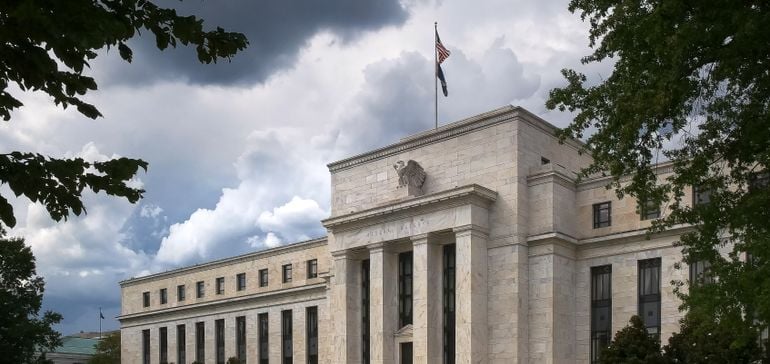The six largest U.S. banks have until July 31 to submit data to the Federal Reserve, to be used in the central bank’s pilot climate scenario analysis, the Fed said Tuesday.
JPMorgan Chase, Bank of America, Citi, Wells Fargo, Goldman Sachs and Morgan Stanley must detail the impact two natural disasters — within the span of a year — would make on residential and commercial real estate lending portfolios as part of the exercise.
The first, a severe hurricane affecting the Northeast, will be used as a baseline because each participating bank has substantial investment in the region. Banks also will choose a second event in another region of the country — flood, drought, wildfire and the like — to affect the same categories of holdings during the same year.
Banks must also gauge the 10-year impact of transition risks on their corporate and commercial real estate lending portfolios. That will take into account changes in policy and sentiment in the commercial and consumer sectors as a result of climate change.
Unlike the Fed’s recurring stress tests, the exercise won’t have capital or supervisory implications for the banks. The central bank emphasized Tuesday that the climate pilot is “exploratory in nature.”
The Fed expects by the end of the year to publish the exercise’s findings, though it won’t spotlight individual banks’ responses, data or projected impact. Rather, the focus will be aggregated.
Michael Barr, the Fed’s vice chair for supervision, stressed the central bank’s “narrow, but important, responsibilities regarding climate-related financial risks” — namely, “to ensure that banks understand and manage their material risks, including the financial risks from climate change.”
The Fed announced in September that the exercise would launch this year, and named the participants. Tuesday’s update comes less than two weeks after Fed Chair Jerome Powell said the central bank “[is] not, and will not be, a ‘climate policymaker.’”
The exercise is meant to “better identify critical data, modeling and risk-management components” related to climate change, the Fed wrote Tuesday.
The physical loss portion of the test compares the selected events’ 100-year impact with insurance coverage, 200-year impact with insurance and 200-year impact without insurance.
The transition risk part contains a scenario with no change in climate policy, an increase in greenhouse-gas emissions through 2080 and 3-degree-Celsius increase in global temperature through 2100. Other scenarios adhere, in varying degrees, to the Network for Greening the Financial System’s NetZero 2050 framework.



